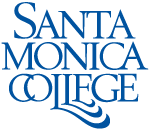Chem 10 Experiments
- Page ID
- 93990
\( \newcommand{\vecs}[1]{\overset { \scriptstyle \rightharpoonup} {\mathbf{#1}} } \)
\( \newcommand{\vecd}[1]{\overset{-\!-\!\rightharpoonup}{\vphantom{a}\smash {#1}}} \)
\( \newcommand{\dsum}{\displaystyle\sum\limits} \)
\( \newcommand{\dint}{\displaystyle\int\limits} \)
\( \newcommand{\dlim}{\displaystyle\lim\limits} \)
\( \newcommand{\id}{\mathrm{id}}\) \( \newcommand{\Span}{\mathrm{span}}\)
( \newcommand{\kernel}{\mathrm{null}\,}\) \( \newcommand{\range}{\mathrm{range}\,}\)
\( \newcommand{\RealPart}{\mathrm{Re}}\) \( \newcommand{\ImaginaryPart}{\mathrm{Im}}\)
\( \newcommand{\Argument}{\mathrm{Arg}}\) \( \newcommand{\norm}[1]{\| #1 \|}\)
\( \newcommand{\inner}[2]{\langle #1, #2 \rangle}\)
\( \newcommand{\Span}{\mathrm{span}}\)
\( \newcommand{\id}{\mathrm{id}}\)
\( \newcommand{\Span}{\mathrm{span}}\)
\( \newcommand{\kernel}{\mathrm{null}\,}\)
\( \newcommand{\range}{\mathrm{range}\,}\)
\( \newcommand{\RealPart}{\mathrm{Re}}\)
\( \newcommand{\ImaginaryPart}{\mathrm{Im}}\)
\( \newcommand{\Argument}{\mathrm{Arg}}\)
\( \newcommand{\norm}[1]{\| #1 \|}\)
\( \newcommand{\inner}[2]{\langle #1, #2 \rangle}\)
\( \newcommand{\Span}{\mathrm{span}}\) \( \newcommand{\AA}{\unicode[.8,0]{x212B}}\)
\( \newcommand{\vectorA}[1]{\vec{#1}} % arrow\)
\( \newcommand{\vectorAt}[1]{\vec{\text{#1}}} % arrow\)
\( \newcommand{\vectorB}[1]{\overset { \scriptstyle \rightharpoonup} {\mathbf{#1}} } \)
\( \newcommand{\vectorC}[1]{\textbf{#1}} \)
\( \newcommand{\vectorD}[1]{\overrightarrow{#1}} \)
\( \newcommand{\vectorDt}[1]{\overrightarrow{\text{#1}}} \)
\( \newcommand{\vectE}[1]{\overset{-\!-\!\rightharpoonup}{\vphantom{a}\smash{\mathbf {#1}}}} \)
\( \newcommand{\vecs}[1]{\overset { \scriptstyle \rightharpoonup} {\mathbf{#1}} } \)
\( \newcommand{\vecd}[1]{\overset{-\!-\!\rightharpoonup}{\vphantom{a}\smash {#1}}} \)
\(\newcommand{\avec}{\mathbf a}\) \(\newcommand{\bvec}{\mathbf b}\) \(\newcommand{\cvec}{\mathbf c}\) \(\newcommand{\dvec}{\mathbf d}\) \(\newcommand{\dtil}{\widetilde{\mathbf d}}\) \(\newcommand{\evec}{\mathbf e}\) \(\newcommand{\fvec}{\mathbf f}\) \(\newcommand{\nvec}{\mathbf n}\) \(\newcommand{\pvec}{\mathbf p}\) \(\newcommand{\qvec}{\mathbf q}\) \(\newcommand{\svec}{\mathbf s}\) \(\newcommand{\tvec}{\mathbf t}\) \(\newcommand{\uvec}{\mathbf u}\) \(\newcommand{\vvec}{\mathbf v}\) \(\newcommand{\wvec}{\mathbf w}\) \(\newcommand{\xvec}{\mathbf x}\) \(\newcommand{\yvec}{\mathbf y}\) \(\newcommand{\zvec}{\mathbf z}\) \(\newcommand{\rvec}{\mathbf r}\) \(\newcommand{\mvec}{\mathbf m}\) \(\newcommand{\zerovec}{\mathbf 0}\) \(\newcommand{\onevec}{\mathbf 1}\) \(\newcommand{\real}{\mathbb R}\) \(\newcommand{\twovec}[2]{\left[\begin{array}{r}#1 \\ #2 \end{array}\right]}\) \(\newcommand{\ctwovec}[2]{\left[\begin{array}{c}#1 \\ #2 \end{array}\right]}\) \(\newcommand{\threevec}[3]{\left[\begin{array}{r}#1 \\ #2 \\ #3 \end{array}\right]}\) \(\newcommand{\cthreevec}[3]{\left[\begin{array}{c}#1 \\ #2 \\ #3 \end{array}\right]}\) \(\newcommand{\fourvec}[4]{\left[\begin{array}{r}#1 \\ #2 \\ #3 \\ #4 \end{array}\right]}\) \(\newcommand{\cfourvec}[4]{\left[\begin{array}{c}#1 \\ #2 \\ #3 \\ #4 \end{array}\right]}\) \(\newcommand{\fivevec}[5]{\left[\begin{array}{r}#1 \\ #2 \\ #3 \\ #4 \\ #5 \\ \end{array}\right]}\) \(\newcommand{\cfivevec}[5]{\left[\begin{array}{c}#1 \\ #2 \\ #3 \\ #4 \\ #5 \\ \end{array}\right]}\) \(\newcommand{\mattwo}[4]{\left[\begin{array}{rr}#1 \amp #2 \\ #3 \amp #4 \\ \end{array}\right]}\) \(\newcommand{\laspan}[1]{\text{Span}\{#1\}}\) \(\newcommand{\bcal}{\cal B}\) \(\newcommand{\ccal}{\cal C}\) \(\newcommand{\scal}{\cal S}\) \(\newcommand{\wcal}{\cal W}\) \(\newcommand{\ecal}{\cal E}\) \(\newcommand{\coords}[2]{\left\{#1\right\}_{#2}}\) \(\newcommand{\gray}[1]{\color{gray}{#1}}\) \(\newcommand{\lgray}[1]{\color{lightgray}{#1}}\) \(\newcommand{\rank}{\operatorname{rank}}\) \(\newcommand{\row}{\text{Row}}\) \(\newcommand{\col}{\text{Col}}\) \(\renewcommand{\row}{\text{Row}}\) \(\newcommand{\nul}{\text{Nul}}\) \(\newcommand{\var}{\text{Var}}\) \(\newcommand{\corr}{\text{corr}}\) \(\newcommand{\len}[1]{\left|#1\right|}\) \(\newcommand{\bbar}{\overline{\bvec}}\) \(\newcommand{\bhat}{\widehat{\bvec}}\) \(\newcommand{\bperp}{\bvec^\perp}\) \(\newcommand{\xhat}{\widehat{\xvec}}\) \(\newcommand{\vhat}{\widehat{\vvec}}\) \(\newcommand{\uhat}{\widehat{\uvec}}\) \(\newcommand{\what}{\widehat{\wvec}}\) \(\newcommand{\Sighat}{\widehat{\Sigma}}\) \(\newcommand{\lt}{<}\) \(\newcommand{\gt}{>}\) \(\newcommand{\amp}{&}\) \(\definecolor{fillinmathshade}{gray}{0.9}\)- 1: Introducing Measurements in the Laboratory (Experiment)
- Our knowledge of chemistry and chemical processes largely depends on our ability to obtain correct information about matter. Often this information is quantitative, in the form of measurements. In this lab, students will be introduced to some common measuring instruments so that they can practice making measurements, and to learn about instrument precision. Since all measuring devices are subject to some error, it is impossible to make exact measurements.
- 2: The Density of Liquids and Solids (Experiment)
- OBJECTIVES To determine the density of pure water; To determine the density of aluminum (applying the technique of water displacement) and to use this value to determine the thickness of a piece of aluminum foil; To measure the mass and volume (via measured dimensions) of several cylinders of an unknown material, and to determine the density of this material via graphical analysis of the collected data.
- 3: Chemical Nomenclature (Experiment)
- Ionic compounds are composed of ions. An ion is an atom or molecule with an electrical charge. Monatomic ions are formed from single atoms that have gained or lost electrons. Polyatomic ions are formed from molecules that have gained or lost electrons. Negative ions are called anions, and are formed when an atom or molecule gains electrons. All non- metals form negatively charged ions. Positive ions are called cations, and are formed when an species loses electrons.
- 4: The Properties of Oxygen Gas (Experiment)
- Free elemental oxygen occurs naturally as a gas in the form of diatomic molecules. Oxygen exhibits many unique physical and chemical properties. In this lab, oxygen will be generated as a product of the decomposition of hydrogen peroxide. A catalyst is used to speed up the rate of the decomposition reaction, which would otherwise be too slow to use as a source of oxygen. The catalyst does not get consumed by the reaction, and can be collected for re-use once the reaction is complete.
- 5: The Composition of Potassium Chlorate (Experiment)
- OBJECTIVES To experimentally determine the mass percent of oxygen in the compound potassium chlorate ( KClO3 ) via the thermal decomposition of a sample of potassium chlorate. To qualitatively demonstrate that the residue resulting from the decomposition of potassium chlorate is potassium chloride.
- 6: Single and Double Displacement Reactions (Experiment)
- During a chemical reaction both the form and composition of matter are changed. Old substances are converted to new substances, which have unique physical and chemical properties of their own.
- 7: Mole Ratios and Reaction Stoichiometry (Experiment)
- To determine these mole-to-mole ratios experimentally, a quantitative analysis of both reactions is required. Specifically, a pre-weighed mass of sodium bicarbonate/carbonate will be allowed to react with a slight excess of hydrochloric acid. The sodium chloride product will then be carefully retrieved, dried and weighed at the end of the reaction. This mass of collected sodium chloride is called an experimental yield.
- 9: Lewis Structures and Molecular Shapes (Experiment)
- The objectives of this laboratory are: To practice drawing Lewis Structures for various covalently bonded molecules and polyatomic ions. To use model kits to construct these molecules/ions in order to explore their structure and shapes. To practice predicting molecular shapes (using VSEPR theory) and molecular polarity
- 10: Experimental Determination of the Gas Constant (Experiment)
- A gas is the state of matter that is characterized by having neither a fixed shape nor a fixed volume. Gases exert pressure, are compressible, have low densities and diffuse rapidly when mixed with other gases. On a microscopic level, the molecules (or atoms) in a gas are separated by large distances and are in constant, random motion. Four measurable properties can be used to describe a gas quantitatively: pressure, volume, temperature, and mole quantity.
- 11: Titration of Vinegar (Experiment)
- OBJECTIVES To determine the molarity and percent by mass of acetic acid in vinegar.
- 12: Equilibrium and Le Chatelier's Principle (Experiment)
- A reversible reaction is a reaction in which both the conversion of reactants to products (forward reaction) and the re-conversion of products to reactants (backward reaction) occur simultaneously. A reversible reaction at equilibrium can be disturbed if a stress is applied to it and the reversible reaction will undergo a shift in order to re-establish its equilibrium. This is known as Le Chatelier’s Principle.


